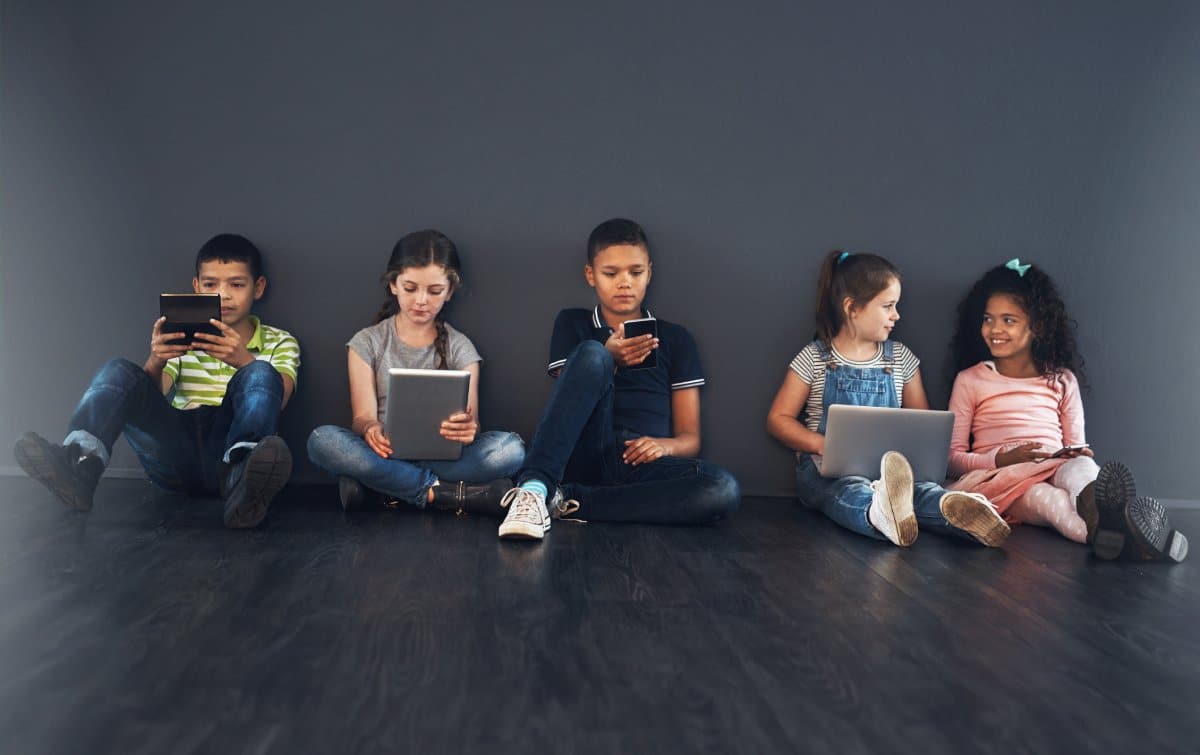In the digital age, parenting has an added layer: managing screen time. With conflicting research and varying expert opinions, knowing how to balance technology in your children’s lives can be daunting. Let’s explore the dual roles of screens, both as developmental tools and potential risks to your child’s wellbeing.
1. Early Development Risks

For children under 2, screen time can interfere with developmental milestones related to communication and social skills. The American Academy of Pediatrics (AAP) recommends avoiding digital media use in this age group, except for video chatting.
2. Enhanced Learning Tools

Educational apps and programs designed for toddlers can be beneficial when used appropriately. These tools can introduce basic concepts of numbers, letters, and colors in an engaging way.
3. Delay in Language Skills

Excessive screen time has been linked to delays in language acquisition among toddlers, as it reduces the time they spend interacting with caregivers and engaging in verbal communication.
4. Interactive Learning vs. Passive Consumption

Interactive apps that encourage active engagement can enhance learning, contrasting with passive video watching, which should be limited due to its lower educational value.
5. Impact on Physical Health

High screen time has been associated with higher risks of obesity in children due to reduced physical activity. Encouraging active play can mitigate this risk.
6. Promotion of Cognitive Skills

Certain games and applications can improve cognitive skills such as problem-solving, memory, and concentration, especially when they are designed for educational purposes.
7. Reduced Attention Span

Some studies suggest that prolonged exposure to rapid image changes during early years can condition the brain to expect high levels of stimulation, which decreases attention span for slower-paced activities.
8. Socialization Opportunities

For older children, moderated use of social media and online interactions can enhance social skills and provide platforms for creative expression and knowledge exchange.
9. Exposure to Inappropriate Content

The internet can be a minefield of inappropriate content. Using child safety apps and monitoring can help protect young minds from being exposed to harmful material.
10. Benefits of Controlled Screen Time

When used judiciously, screen time can be a reward that helps children learn to manage their time and priorities, balancing entertainment with responsibilities.
11. Emotional Development Impact

Children younger than two are particularly vulnerable to the effects of screens on their emotional development. Screens can replace human interaction, a critical component of emotional learning.
12. Creativity Booster

Technology offers children numerous tools for creative expression, from digital drawing to making music or creating digital stories, fostering creativity and technical skills.
13. Sleep Disturbances

The blue light emitted from screens can interfere with the ability to fall asleep and the quality of sleep. Ensuring no screen time 1-2 hours before bed can help maintain healthy sleep patterns.
14. Encouraging Family Time

Choosing family-oriented games and media can encourage bonding times, such as puzzle games or cooperative video games that require teamwork.
15. Development of Critical Thinking

Educational content can be curated to develop critical thinking skills, with interactive tasks and problem-solving scenarios.
16. Risk of Cyberbullying

As children grow, digital interactions can expose them to cyberbullying. Teaching about internet safety and maintaining open communication lines are vital.
17. Physical Interaction Substitution

Especially for toddlers, physical play is crucial for development. Screens should not replace time spent playing with toys that enhance motor skills and real-world interaction.
18. Role in Modern Education

Screens are integral to modern education systems, providing access to vast resources and real-time interaction with subjects that are not geographically accessible.
19. Behavioral Issues

Research indicates a correlation between excessive screen time and behavioral issues, such as tantrums and aggression, particularly if the content is not age-appropriate.
20. Digital Literacy Skills

In a digital world, developing digital literacy at an early age can be beneficial, preparing children for the digital aspects of modern academics and careers.
21. Dependency and Addiction

It’s crucial to watch for signs of dependency or addictive behaviors related to screen use, characterized by a lack of control over screen time and a preoccupation with digital activities.
Choosing Your Path Wisely

Navigating the digital landscape requires a balanced approach, recognizing the potential of screens to both enrich and detract from our children’s development. By staying informed and vigilant, we can make choices that harness the benefits of digital tools while safeguarding against their risks. Remember, moderation is key in helping your children grow into healthy, well-rounded individuals in a digital world.
The post Screens: Saviors or Saboteurs? Navigating the Minefield of Digital Parenting first appeared on Mama Say What?!
Featured Image Credit: Shutterstock / PeopleImages.com – Yuri A.
For transparency, this content was partly developed with AI assistance and carefully curated by an experienced editor to be informative and ensure accuracy.





